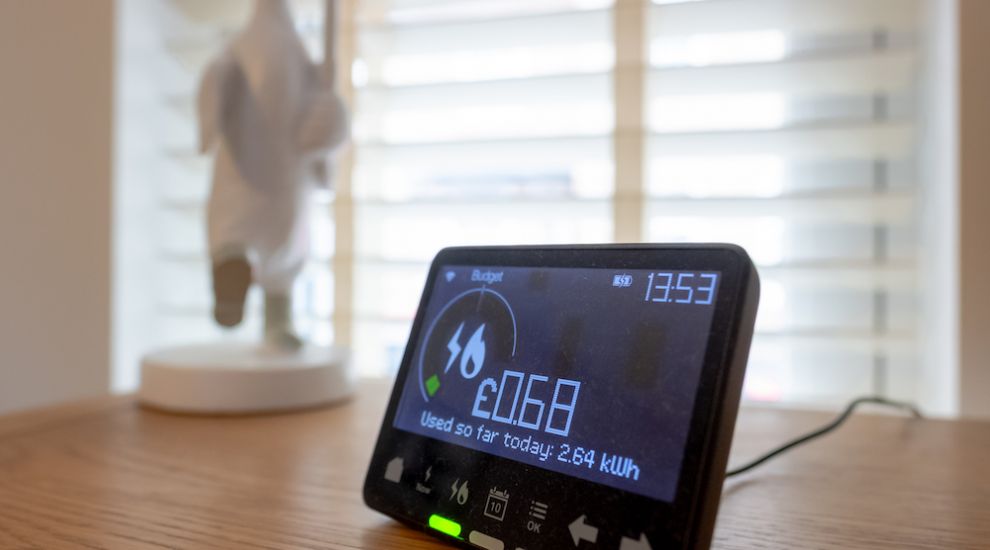


Nearly a fifth of households could already be in 'fuel poverty' in Guernsey before the next electricity tariff increase comes in this summer.
Guernsey Electricity announced on Friday that tariffs will go up 13% from 1 July this year.
That follows an increase of 9% a year earlier.
An estimated 17% of households in Guernsey are in fuel poverty already - with the 2022 9% increase in play, but not the 13% increase coming in this year - meaning they spend more than 6% of their disposable income on electricity.

Pictured: 17% of households in Guernsey are said to be in fuel poverty, spending more than 6% of their take home pay on electricity.
GEL said the increase coming in this July is needed to meet additional costs in importing electricity caused by the war in Ukraine and to continue with its base investment of £10.7million per annum in maintaining the island’s core infrastructure. The increase is also needed, according to GEL, to help it rebalance its fixed and variable tariffs “to better reflect the fixed and variable costs of the company” and meet other increases in operational expenditure.
When the increase was announced on Friday, the news was met with disbelief by many. Some people used social media to claim they will struggle to pay their utility bill after the price rises this summer.
The States' Trading Supervisory Board which oversees the island's utilities had rejected a request for a 14.25% increase saying that would be too high during this time of high inflation.

Pictured: Deputy Peter Roffey has oversight of Guernsey Electricity as President of the States Trading Supervisory Board.
STSB has also commissioned an investigation into the level of fuel poverty locally, saying that a more reliable measure for tracking the impact of energy costs on households could help to better target support where it is needed.
Frontier Economics has been working with STSB on this.
It started by looking at how other jurisdictions use different methodologies to identify and monitor fuel poverty.
Frontier Economics said that it is difficult to offer any direct comparisons though “due to differences in approach, timing and data availability”.
“It is important that tariffs are efficient and cost reflective to maintain affordability. However even efficient and cost reflective tariffs are subject to fluctuation as a result of fluctuations in external markets," the Frontier Economics report said.
“Therefore in many countries, affordability-related interventions typically focus on targeted supports to those in need, such as income support, energy rebates, and specific vulnerable customer tariffs."
With several ways to measure fuel poverty - the percentage of income spent on energy costs - Frontier Economics said: "We use an expenditure-based measure due to limited data availability. That is, households are considered fuel poor if they spend more than a given percentage of their disposable household income on energy. We identify this percentage [for Guernsey] as 6% for electricity consumption.”

Pictured: At Guernsey Electricity's power station (Paul Chambers).
Based on local household expenditure and income data from 2019, Frontier Economics calculated that at 2022 tariff levels around 17% of local households currently spend more than 6% of their disposable income – after income tax, social security and housing costs - on electricity.
In Wales and Northern Ireland, households are classed as fuel poor if more than 10% of their income is spent on energy bills, including electricity.
However in England and Scotland, the measure also takes account of a remaining income after energy costs, and whether these meet other poverty thresholds. In England, a home’s energy efficiency is also taken into account.
Based on the latest available estimates, 13% of households in England were considered to be in fuel poverty (2022), 25% in Scotland (2019), 14% in Wales (2021), 24% in Northern Ireland (2019), 29% in Ireland (2022).

Pictured: Guernsey Electricity's HQ at North Side.
In putting up its prices, Guernsey Electricity said it understands that some people will be adversely impacted by the tariff increase.
GEL said that as the increase will impact on customers depending on individual consumption, the utility will be providing a tariff calculator on its website in June to help people monitor expenditure.
The firm said anyone who may have concerns paying their bills should contact the Customer Services team and discuss support options such as a tailored payment plan.
FOCUS: Why is Guernsey Electricity £16million in credit?
States approve Guernsey Electricity price rise
14.25% electricity price hike proposed
States face one of their biggest tests on electricity debate
Guernsey Electricity launches consultation on prices
States' consultation for electricity strategy “imminent”
Electricity prices to rise by 4.8%
Deputy wants islanders protected from waste and electricity price rises
Comments
Comments on this story express the views of the commentator only, not Bailiwick Publishing. We are unable to guarantee the accuracy of any of those comments.